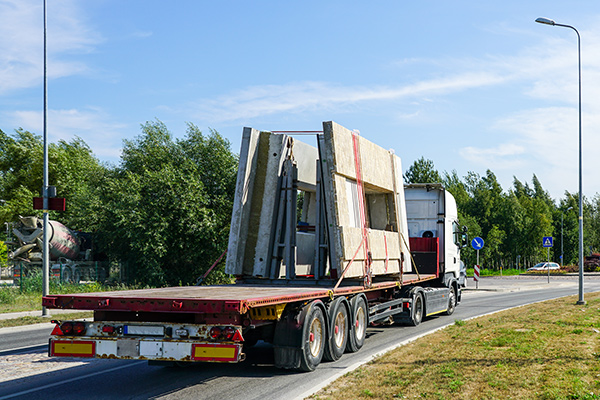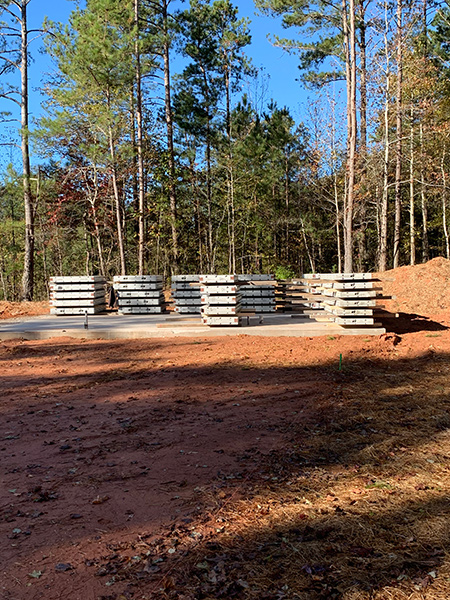3D printing, precast, and tilt-up panels provide builders with new options. Comparing concrete home construction on cost, speed, and strength.

Concrete is finally emerging as a viable option for single-family homes. As natural disasters grow more frequent and severe – 115 different billion-dollar events from 2020 to 2024, up from just eight per year in previous decades – the weaknesses of wood-framed homes continue to be exposed. Tornadoes, hurricanes, and wildfires have leveled entire communities, prompting builders, insurers, and regulators to rethink residential construction.
While concrete construction has historically been held back by higher upfront costs and slower build times, new methods are alleviating these concerns. From 3D printing to precast panels to insulated forms, builders now have multiple options for creating disaster-resistant homes that stay competitive on price and timeline with traditional wood-framed structures.
For builders looking to seize the moment and pioneer the transition to concrete homes, it is critical to understand the different building methods that are solidifying concrete as the future of home construction.
Among the newer methods gaining attention, 3D-printed concrete homes stand out for their novelty and futuristic appeal. Using robotics to extrude a cement-based mixture layer by layer, building up the structural walls of a home directly on site. Guided by a digital model, the printer lays down thick, toothpaste-like ribbons of concrete to form walls with precision.
This approach significantly reduces the need for manual labor. A single machine can replace a crew of framers or masons, while also minimizing material waste by dispensing only what’s needed for each layer.
In theory, this means the structural shell of a small home could be completed in a matter of days. In practice, however, timelines have not always lived up to the hype. The often cited “printed in 24 hours” metric usually refers only to wall printing and not the full build, which still requires conventional foundations, roofing, MEP systems, and finishes. As a result, total construction times are often more closely comparable to traditional homes.
Drawbacks include:
While the technology continues to advance, 3D-printed homes offer interesting potential, but may not be a turnkey solution for widespread residential construction yet.
A more established process, precast concrete systems involve casting entire wall sections in a controlled factory environment before transporting them to the job site for installation. Each panel is poured into a reusable mold, often incorporating steel reinforcement, insulation, electrical conduit, and even architectural finishes like brick texture or stucco patterning—all in one step.
One of the biggest advantages of precast is construction speed. Once the panels arrive, the structure can go up quickly with minimal onsite labor. The precision of factory production also improves quality control and reduces material waste.
Precast concrete delivers exceptional durability. Reinforced with steel and designed to withstand fire, moisture, and high winds, these panels are built to last generations.
However, like any system, it comes with trade-offs:
Precast panel systems deliver high quality, long lifespan, and rapid build times, especially when scale or repetition is part of the plan. For single-family homes, they make the most sense when in close proximity to a precast facility, or when speed and structural performance outweigh costs.
Another option, Insulated Concrete Forms, offer a modern alternative to traditional poured concrete walls, combining structure and insulation in a single step. Instead of using temporary wood forms that are removed after the pour, ICF systems use interlocking foam blocks or panels that stay in place permanently. These hollow forms are stacked like oversized Lego bricks to create the wall layout, then filled with concrete and steel reinforcement.
The result is a monolithic, steel-reinforced concrete wall with continuous insulation on both sides. The forms create a tight thermal envelope, delivering high energy efficiency along with exceptional strength and noise reduction.
Still, ICF adoption faces a few hurdles:
For those looking to balance resilience with comfort and efficiency, ICFs continue to be a compelling option.

While each of the concrete construction methods above brings some value to the table, they also come with compromises. Whether it’s the cost and code ambiguity of 3D printing, the logistical complexity of precast, or the slower pace and added cost of ICFs.
One system now gaining attention for its ability to overcome many of those drawbacks is a tilt-up, site-cast sandwich panel design. Instead of casting large concrete panels off-site and hauling them in, the smaller panels are poured flat on the jobsite using reusable forms. Once cured, they are lifted into place using forklifts instead of cranes, making the process more accessible and cost-effective for homebuilders.
The panels themselves are engineered as structural sandwich panels, with a rigid insulation core surrounded by concrete. Prestressed steel is used as reinforcement during the pour, creating a finished wall system that’s strong, energy-efficient, and ready to weather both storms and temperature swings.
Because the panels are cast on-site, builders avoid the high transportation costs and logistical challenges of precast construction. Compared to ICFs, the tilt-up panel system, first engineered by Nonquit Homes, allows for greater control over panel size, finish quality, and integration of design features.
From a scheduling perspective, the benefits are also significant. With fewer trades required and many elements integrated into the wall panels themselves – insulation, reinforcement, exterior finish – build times can be sharply reduced. In most cases, a crew of just a few workers tilt and set panels into place.
The broader shift in residential construction is expected to come not just from concrete innovation, but by rising insurance premiums and more stringent building regulations on vulnerable wood-framed homes.
Regardless of the method, residential concrete construction is poised to expand rapidly in the coming years. For builders looking to stay ahead, understanding the trade-offs and strengths of each approach is the first step toward delivering smarter, safer, and more resilient homes.
For more information about concrete residential homes, contact Nonquit Homes via phone at (361) 972-6260, email info@nonquithomes.com or visit www.nonquithomes.com.

About the Author:
Greg Rankin is a freelance writer with more than 20 years of experience writing about the oil and gas industry, petrochemicals, and refining.
In this episode, I sat down with Beejan Giga, Director | Partner and Caleb Emerson, Senior Results Manager at Carpedia International. We discussed the insights behind their recent Industry Today article, “Thinking Three Moves Ahead” and together we explored how manufacturers can plan more strategically, align with their suppliers, and build the operational discipline needed to support intentional, sustainable growth. It was a conversation packed with practical perspectives on navigating a fast-changing industry landscape.